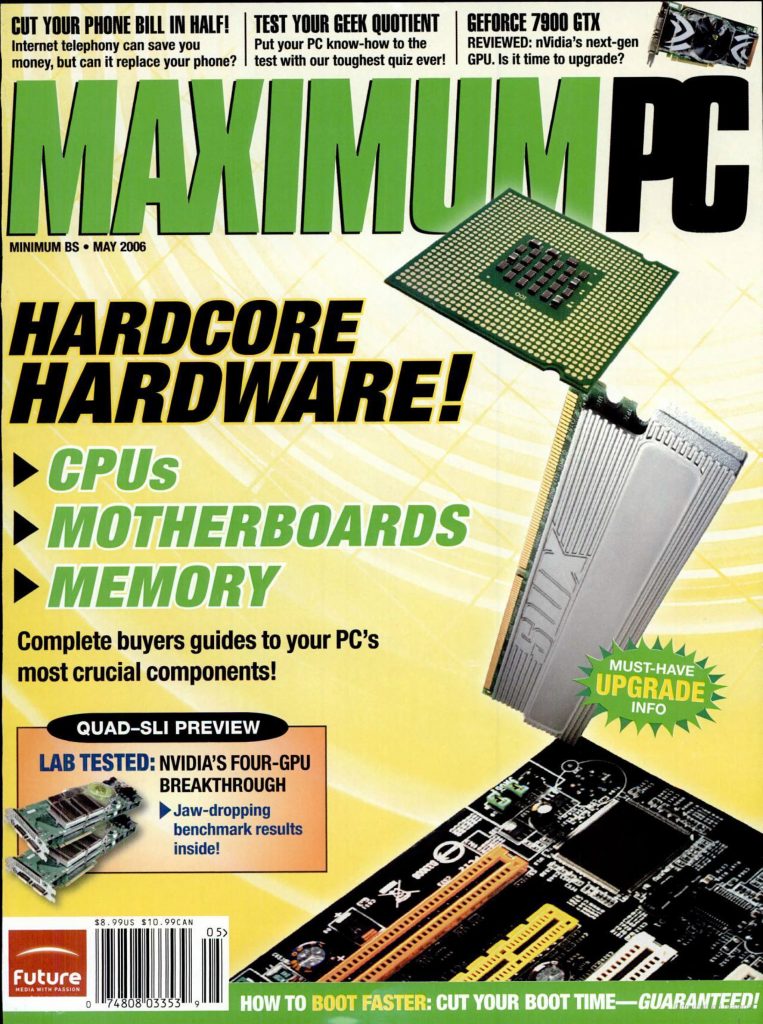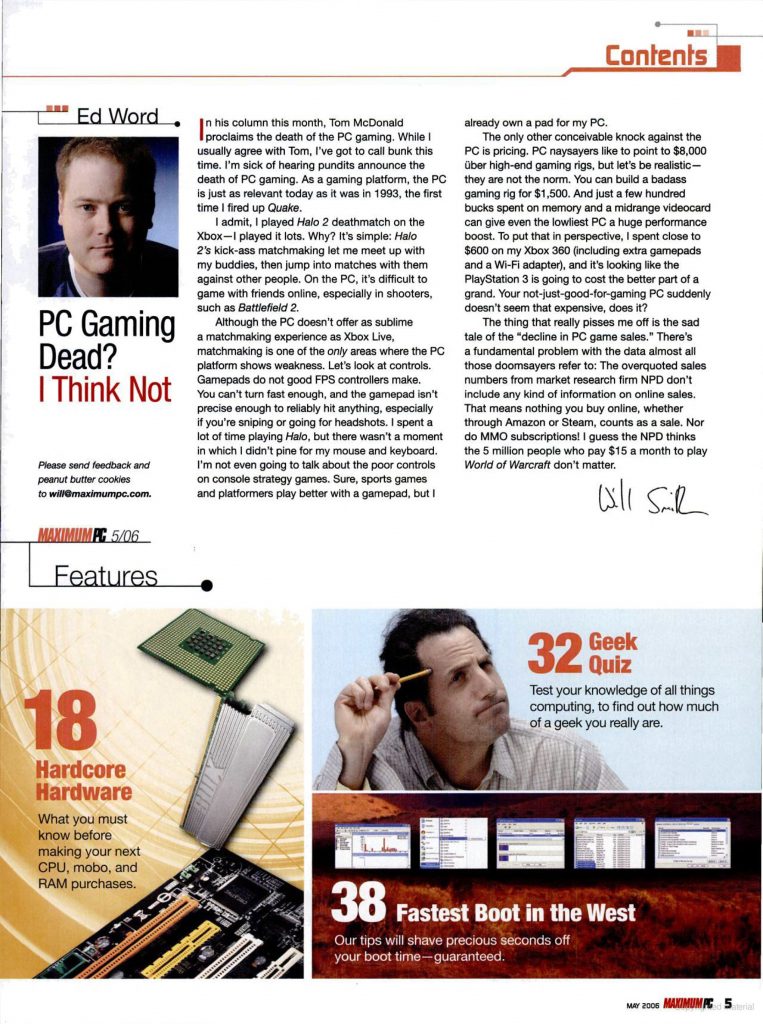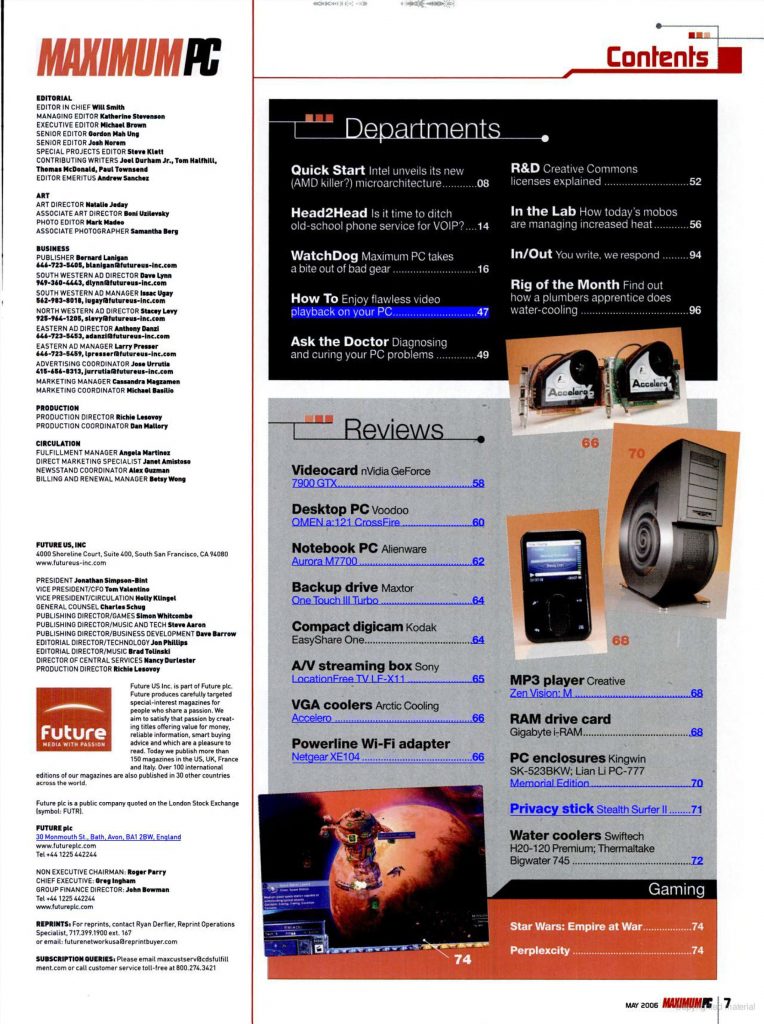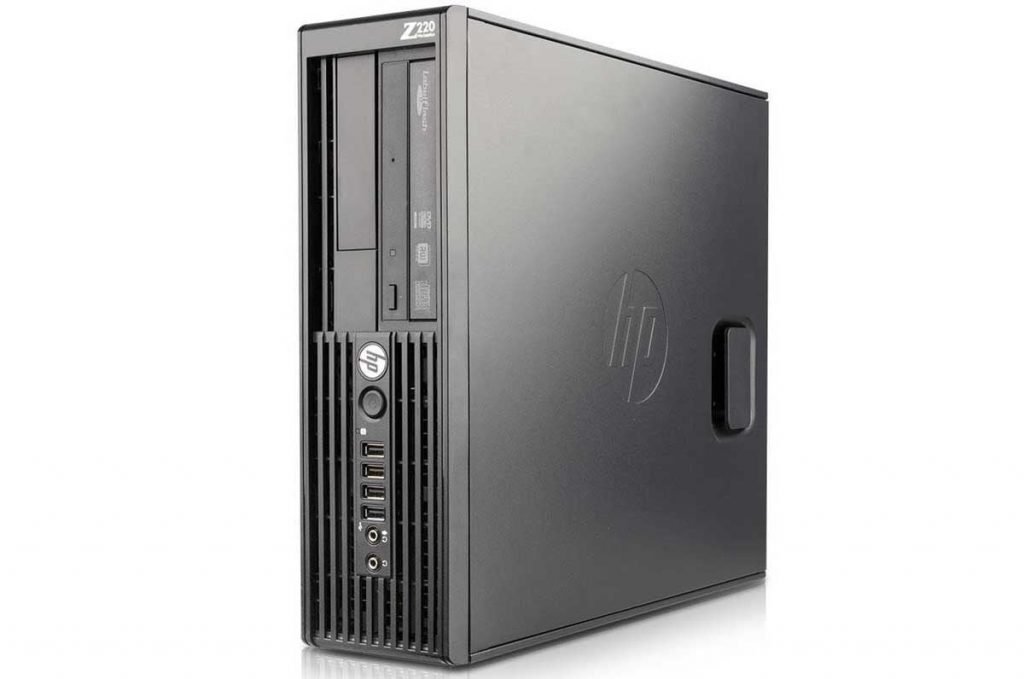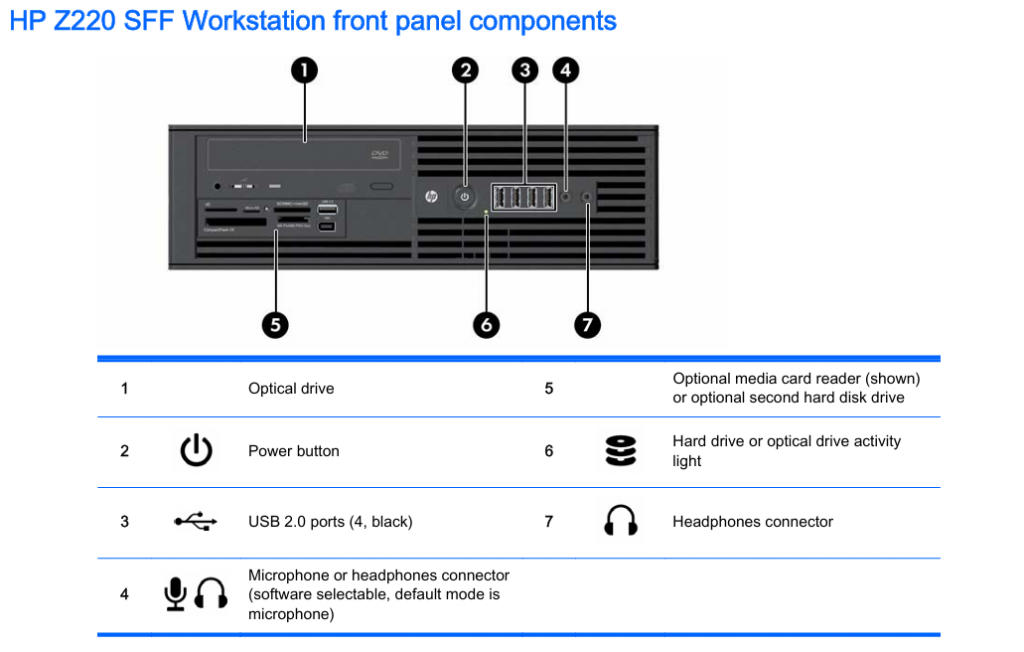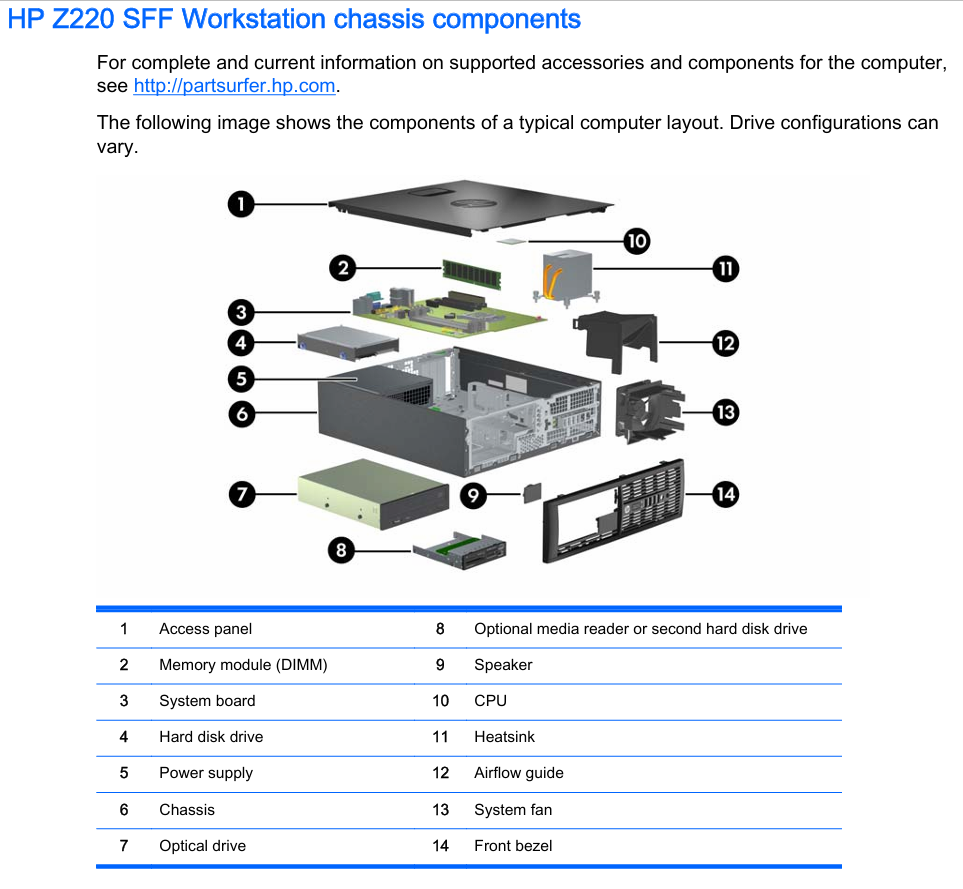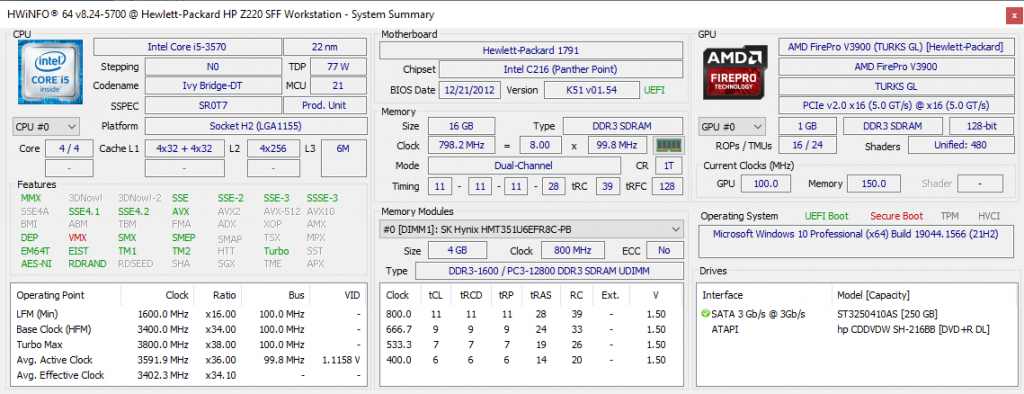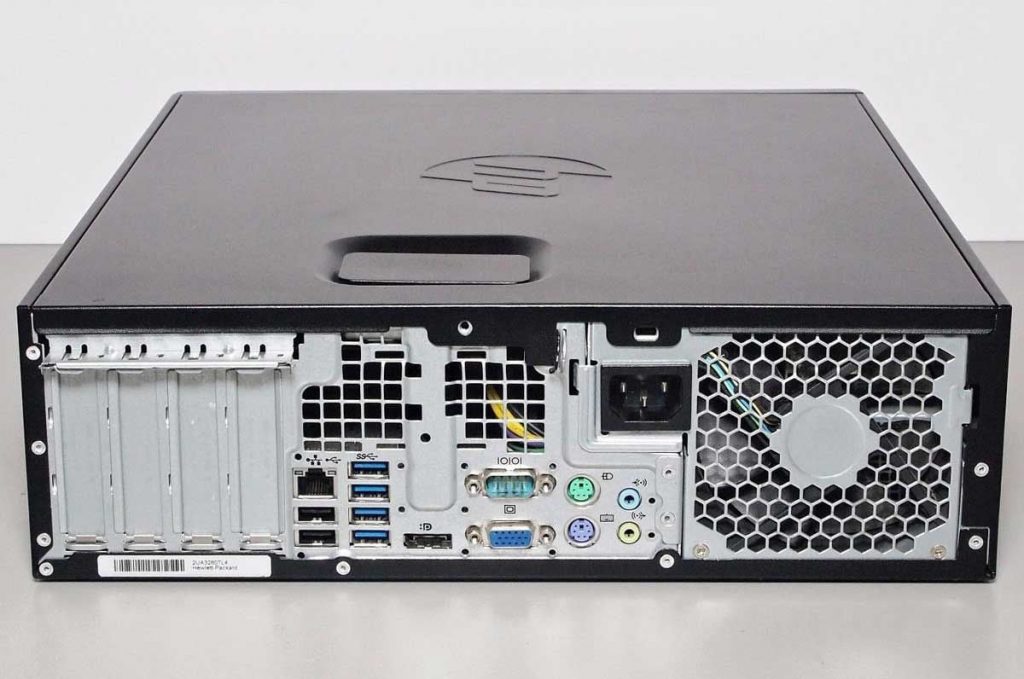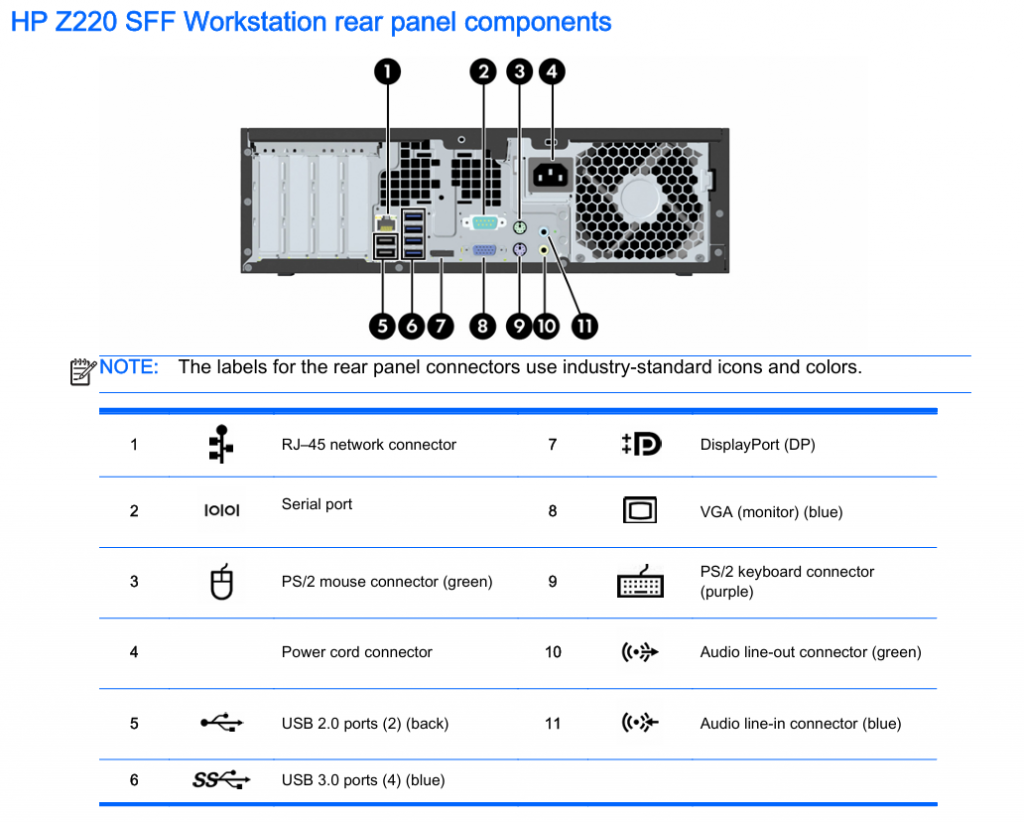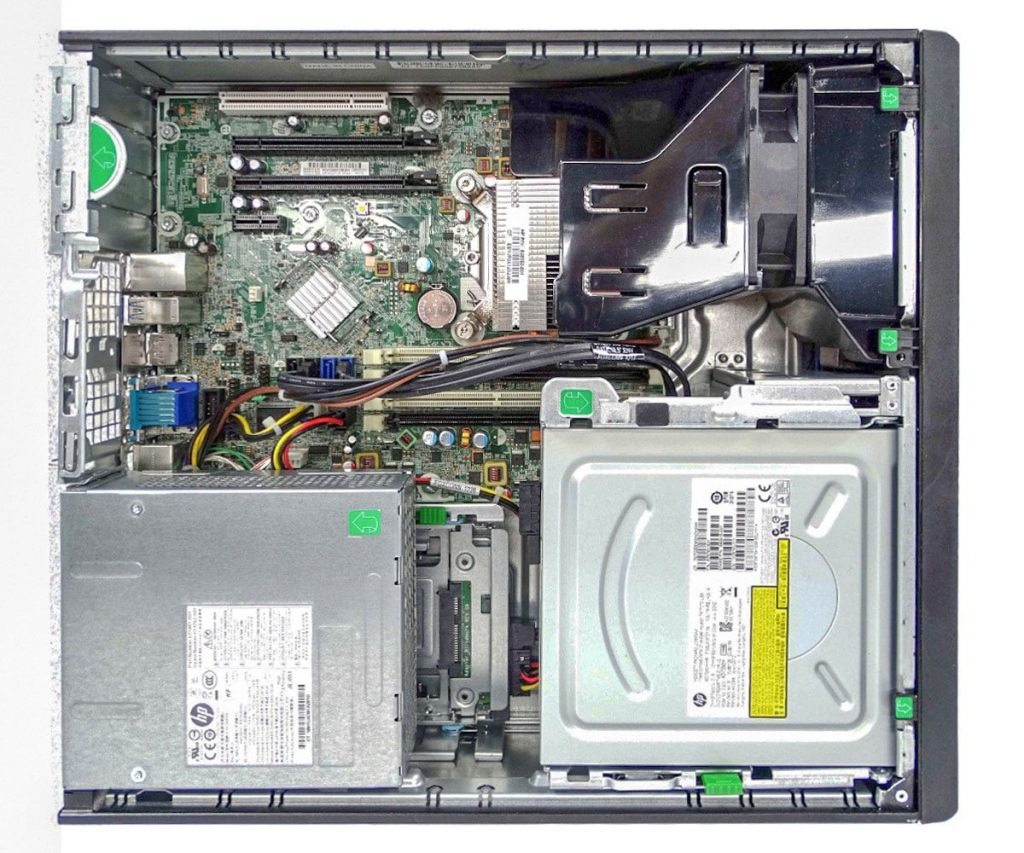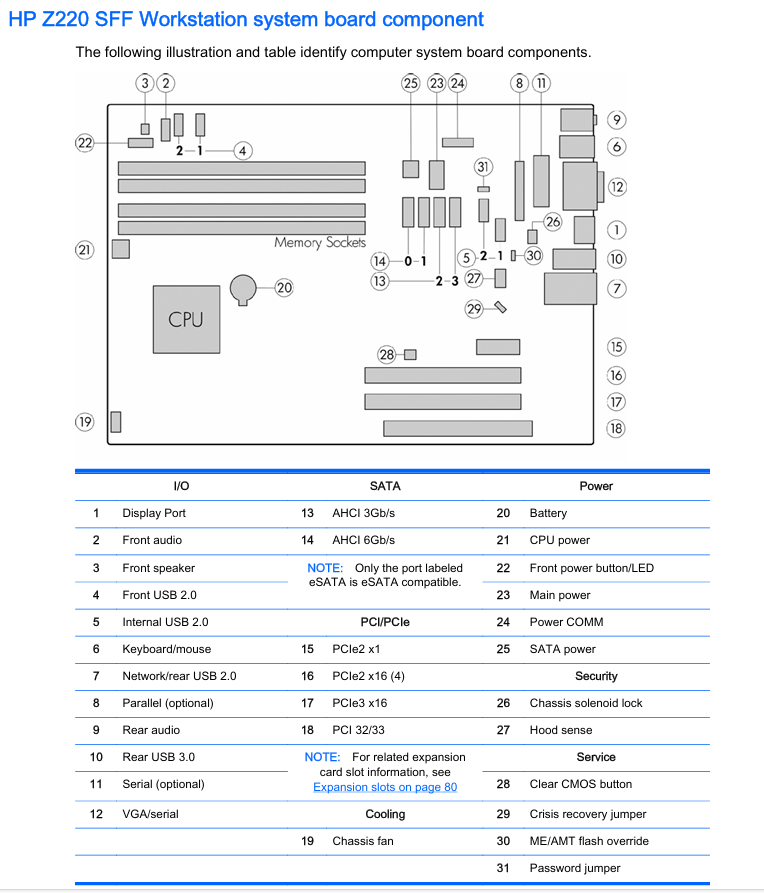Here’s another issue of what was my favorite PC magazine. It hung on longer than most PC print magazines but sadly it too died off a few years back. The May 2006 issue includes:
Features
- Hardcore Hardware – What to know about transitioning to your next motherboard/CPU/memory upgrade which at the time would likely include transitioning from an AGP to a PCI Express based system. Includes advice for choosing the right number of corse, choosing Intel or AMD, which AMD or Intel processor to get, RAM choices, and more.
- Geek Quiz – Maximum PC’s annual computer quiz.
Dapartments
- Quick Start – Intel introduces the Conroe which was the first iteration of the Core architecture as a replacement for the Netburst architecture of the Pentium 4; a look at Vista’s release plans; Intel plans removal of PATA interface; AMD introduces AM2 socket; and more.
- Head2Head – A comparision of VOIP and regular analog phone service.
- WatchDog – HP settles lawsuit over defective Pavilion motherboards; problems with the Minolta Dimage X1 digital camera; and more.
- How To – Solving playback errors, missing sound, player crashes and more when attempting to play back video.
- Ask the Doctor – Questions answered about the right hardware for AutoCAD, problems with a PC recognizing a keyboard, a 400GB Maxtor drive problem, problems after upgrading from a Celeron D to a Pentium 4, Thermaltake’s Bigwater SE water-cooling kit, and more.
- R&D – A look at the various types of Creative Commons licenses, a detailed look at the Cooler Master AquaGate Mini CPU water-cooler, a preview of nVidia’s GeForce 7900 GTX Quad SLI, and more.
- In the Lab – Solving problems with overheating chipsets when using water-cooling, reducing boot times, and more.
Reviews
- Videocard – A look at nVidia’s new flagship GeForce 7900 GTX featuring 512MB GDDR3, a 650MHz clock speed, and SLI technology for only $500.
- Desktop PC – A review of the Omen A:121 Crossfire featuring an Athlon 64 FX-60 CPU, two ATI X1900 XT videocards, 2 GB RAM, four 150GB Raptor 10,000 RPM hard drives in RAID 0, and more for $7500.
- Notebook PC – A review of the Alienware Aurora M7700 featuring an AMD FX-60 CPU, 2GB DDR400, two 80GB hard drives in RAID 0, an nVidia GeForce Go 7800 with 256MB, a 17-inch screen and more for just over $5000.
- Backup drive – A review of the Maxtor One Touch III Turbo external drive which features two Maxtor 500 GB drives in a RAID 0 or RAID 1 config in an external enclosure ($900).
- Compact digicam – A review of the Kodak EasyShare One digital camera ($500).
- A/V streaming box – The Sony LocationFree TV LF-X11, meant to compete with devices like the Slingbox.
- VGA coolers – Arctic Cooling Accelero VGA Coolers. These were aftermarket heatsink/fan combos designed for better cooling than what came stock on most cards at the time.
- Powerline Wi-Fi adapter – The Netgear XE104. At 85b/s it was quite a bit faster than most wi-fi at the time.
- MP3 Player – The Creative Zen Vision: M MP3/video player. Another device modern phones have destroyed.
- RAM drive card – The Gigabyte i-RAM. This was a PCI card with 1 GB of RAM designed to be used as a RAM drive.
- PC enclosures – Reviews of the Kingwin SK-523BKW and the Lian Li PC-777 Memorial Edition (it literally looks like a snail).
- Privacy stick – The Stealth Surfer II, a password protected 128 MB memory stick designed for keeping your web surfing habits private.
- Water coolers – Reviews of the Swiftech H20-120 Premium and Thermaltake Bigwater 745 CPU liquid coolers.
- Gaming – A look at Star Wars: Empire at War, a Star Wars themed strategy game.
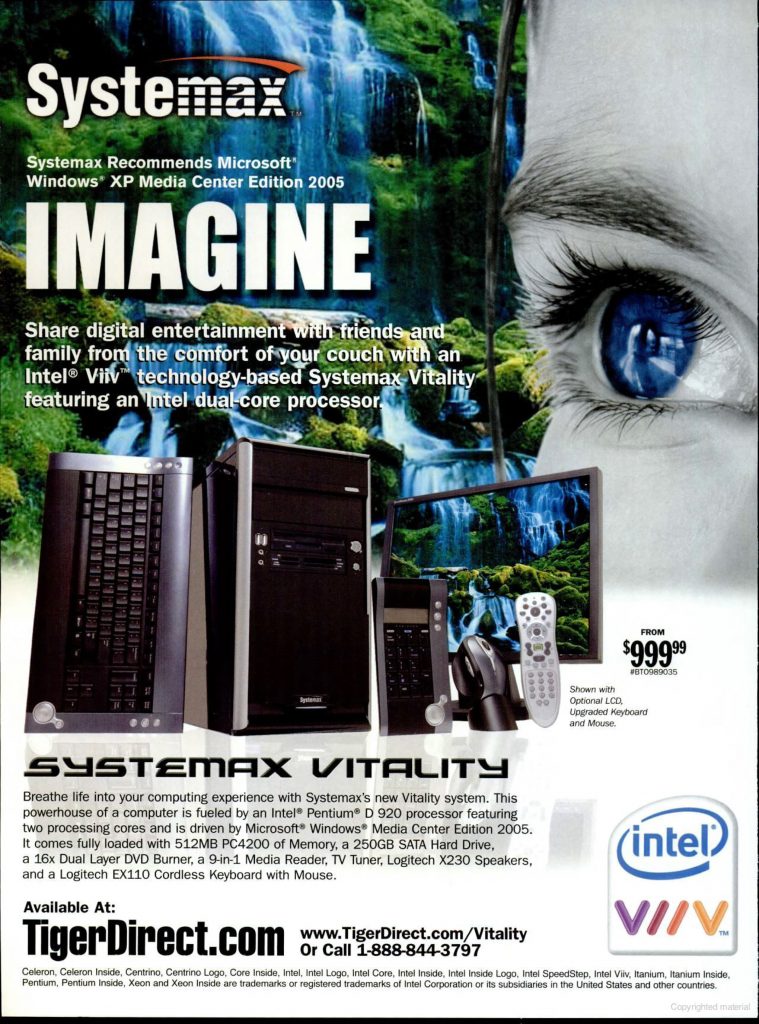
…and more!
